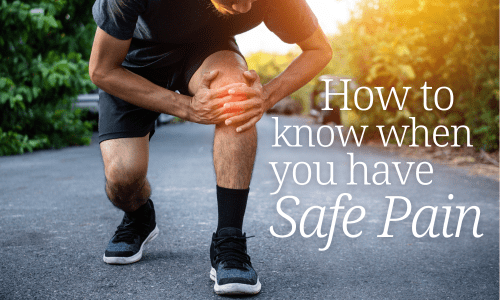Motion and exercise are incredibly important to healing. Bed rest is very rarely recommended for healing after an injury.
Exercising may cause an increase in pain. But not all pain is bad. There is something called Safe Pain. That kind of pain is not indicating harm. It is just indicating change. There are three very easy ways to know if your pain is a sign of re-injury or if it is safe.
- Check your Motion
If your range of motion or strength decreases by 50% after exercise, talk to Meggie before continuing activity. Of course, it is hard to know what is exactly 50%. That’s ok. These are just general guidelines. If you aren’t sure, keep reading and see if the pain guidelines bring clarity.
- Check your Pain
If your pain increased by 2 on the pain scale, it is fine to keep doing what you are doing! For example, if your pain was at a 3 out of 10 (with 10 being the worst) and then when you swim, the pain goes to a 5 out of 10—keep swimming! If your pain goes to a 7, then talk to Meggie before continuing.
- Check your Duration
If the pain stops as soon as you stop moving, you can think about increasing your activity level.
If, after exercise, the pain increases by 3 on the pain scale, you are in a safe range, as long as the pain goes away in the time frames listed below:
–The pain should stop after 2 hours if you are 4 – 8 weeks post injury/onset.
— The pain should stop after 24 hours if you are 8 -16 weeks post injury/onset.
–The pain should stop after 48 hours if you are 16 weeks – years post injury/onset.
The pain scale is not an exact science. It is a general guide.
Don’t worry if you think it increased by 3.5, or if you can’t really tell if it increased by 3 or 4. These guidelines give you a general sense of how to understand your body. A little increase in pain isn’t bad. A big increase in pain is something to listen to. A little decrease in motion after exercise is ok. A big decrease means you did too much.
Exercise and motion is really important to helping you heal. We don’t want you to wait until you feel better to start moving again.
If you wait until you don’t have any pain, the likelihood is you will develop other problems that come from not moving enough. Not exercising creates a bad spiral. A little Safe Pain is better than stopping exercise completely.
